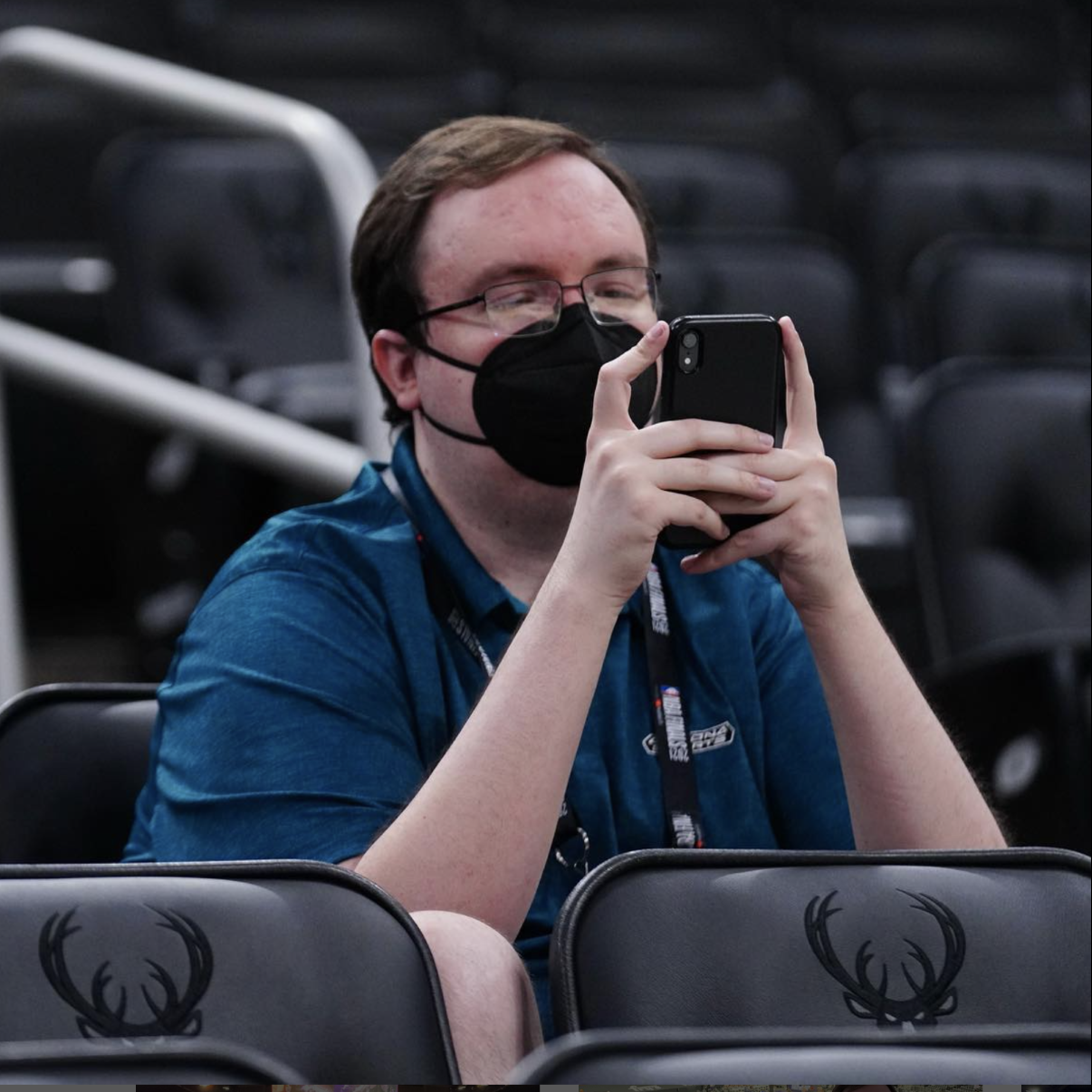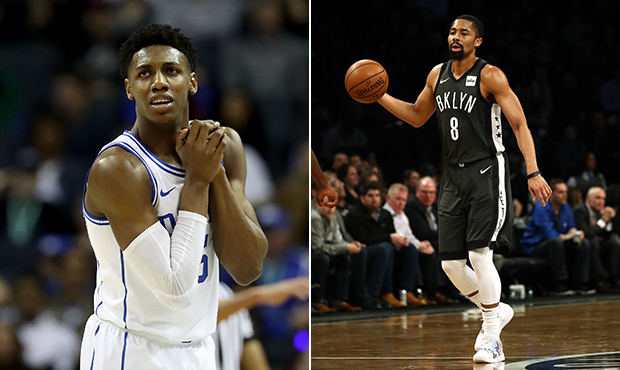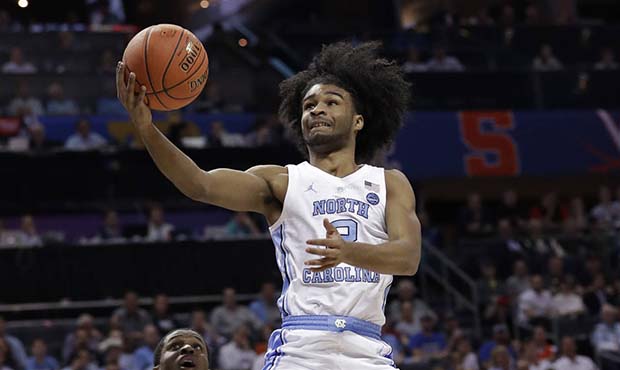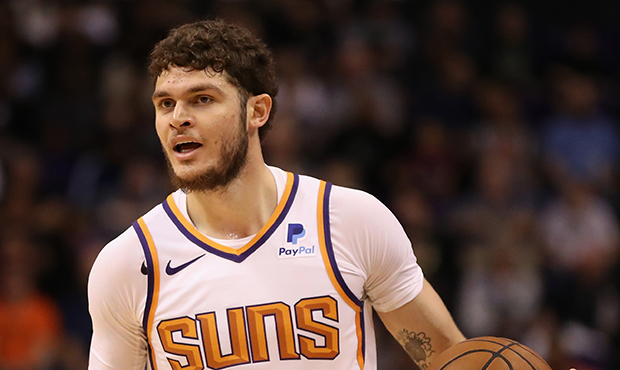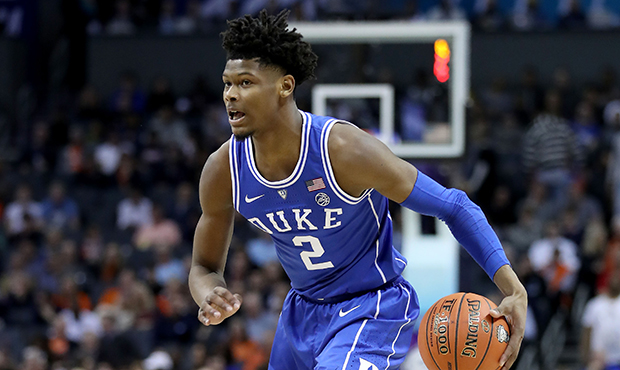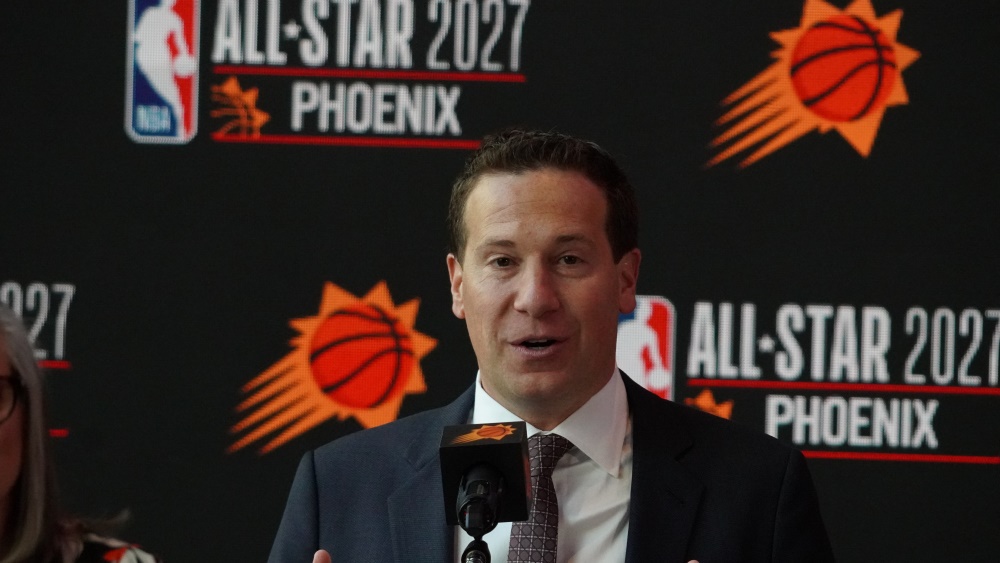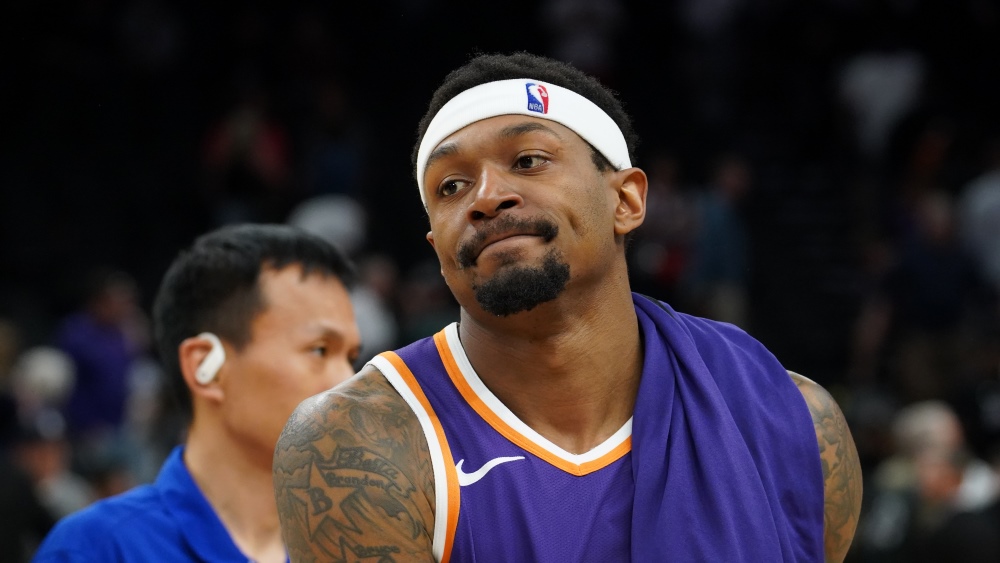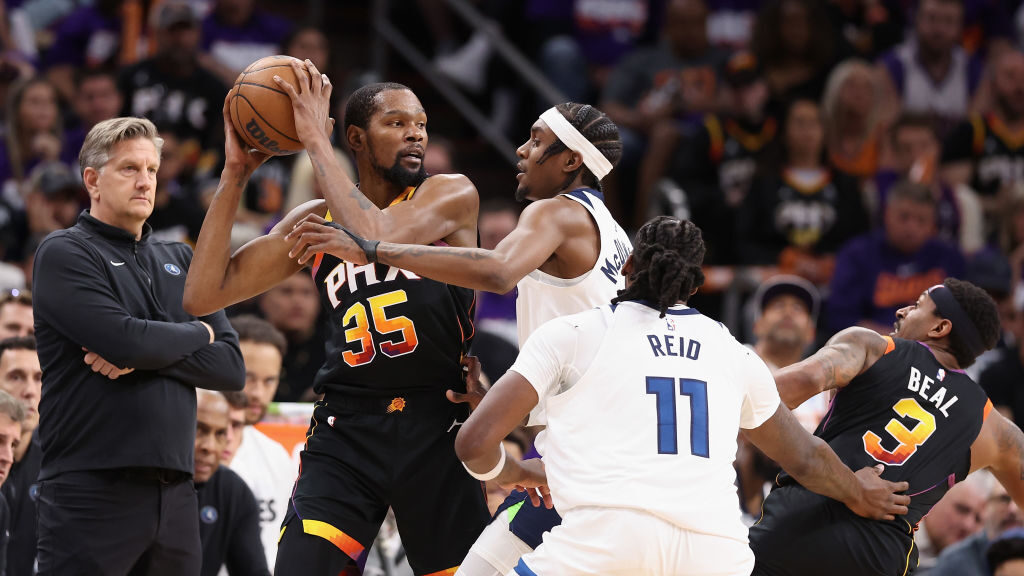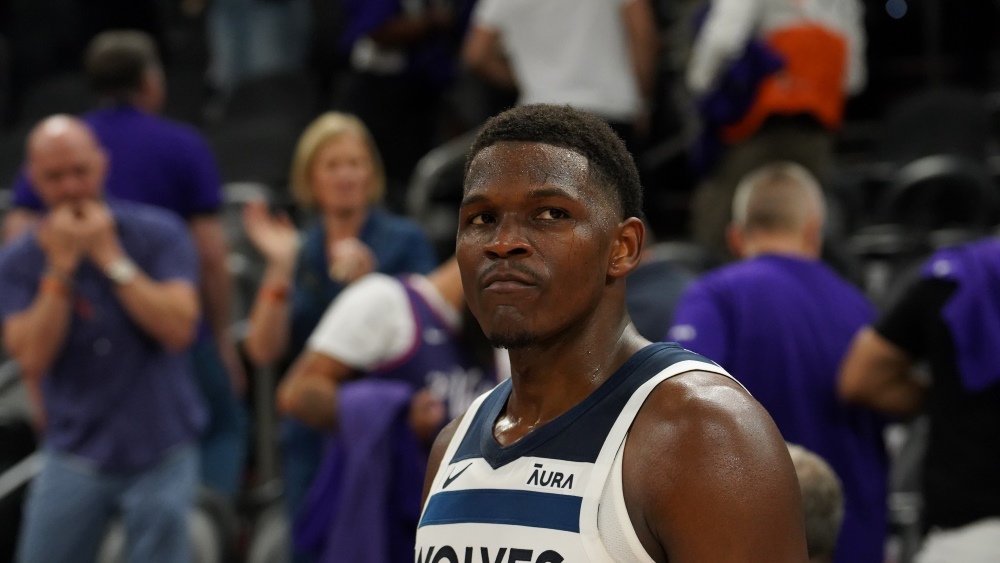Valuing Brandon Clarke’s potential in draft could be different for Suns
Jun 11, 2019, 6:57 AM | Updated: 4:28 pm
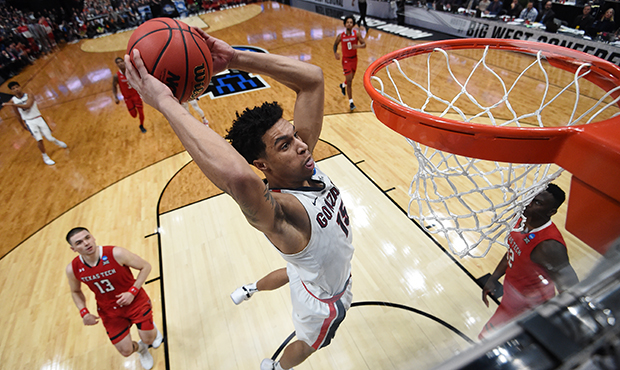
Brandon Clarke #15 of the Gonzaga Bulldogs dunks the ball against the Texas Tech Red Raiders during the second half of the 2019 NCAA Men's Basketball Tournament West Regional at Honda Center on March 30, 2019 in Anaheim, California. (Photo by Sean M. Haffey/Getty Images)
(Photo by Sean M. Haffey/Getty Images)
The push and shove surrounding the perception of what value and potential is in the NBA Draft lie greater in Gonzaga big Brandon Clarke than few prospects we’ve seen this decade.
Let’s start with value.
With the “modern NBA” prioritizing pace, space and versatility, there seemingly is a run of boxes you need to check for a top prospect.
How many positions can they guard? Can they handle the ball? Can you trust them to make the right decisions with the ball? Can they shoot it? What mismatches do they force? Will teams view them as a mismatch?
Clarke shifts the traditional paradigm from the jump because at this point (more on that in a bit) he’s an undersized center at 6-foot-8 and 207 pounds.
He’s more of a specialist but all of what he does together won’t hinder your team in the end product. He’s an awesome shot blocker, can move with perimeter threats and is an intelligent team defender.
A wingspan of 6-foot-8 doesn’t help matters, but next-level speed and hops like this sure does.
On top of that being an incredible play, Clarke’s feel to square up and get a better angle on the ball while flying through the air sum up his strong instincts.
When that goes out on the perimeter, watch Clarke stay close enough to his man for a kick-out pass while also trailing the play and then finishing it.
He’s patient, too, a critical attribute for a shot-blocker of his caliber. He limits his movement here on a switch before going straight up with verticality for an easy rejection.
Now, you see those two clips and must think Clarke is susceptible to leaving his feet.
But because he’s got such a quick first and second jump, he can take his time. Again, he shows patience here to not overload on the ball-handler, not panic on the rotation to his man and time the shot.
Offensively, he’s going to be a rim-runner for the most part.
Clarke shot 68.7% from the field as a junior, but not all of that was dunks and pick-and-roll finishes.
If he sees an opening, Clarke will take a dribble or two and finish.
That’s all it is right now from an NBA fit, because he can’t and doesn’t shoot from deep. Clarke attempted 15 total 3-pointers in 97 college games.
That’s fine because he uses that high basketball IQ to find the right pass when it’s there.
So, through all that, we can asses what we have from a value perspective at the moment.
Clarke’s a versatile defender in every sense of the adjective. His brain matches the talent, ultimately making him a trustworthy cog in your scheme, capable of switching onto ball-handlers or protecting the rim from the weak side.
On offense, stick him in the dunker spot on the baseline when he’s not setting ball screens. When he does set ball screens, you can trust him to make a play with one or two dribbles while his high motor, feel for passes and strong finishing bring ticks of positivity elsewhere.
But to wheel our way back to value, what exactly do we arrive at for Clarke’s role?
His size is a problem. If Clarke is your starting center, he’s going to get overwhelmed in the post and on the glass. He can’t be your only rim protector, either. Offensively, he doesn’t threaten opposing centers enough to earn the value trade-back your hurting on defensively.
Zoom out and reset, though, with Clarke as a reserve big man off the bench bringing his energy and now you’ve really got something.
For now, that’s where you can project his value. You’d need to optimize your other big man around him for it to work unless something drastic happened in his development.
And that’s where we discuss potential.
Clarke is going to turn 23 years old before the 2019-20 NBA season starts. He’s far from a pup.
He’s also far removed from what his “jump shot” looked like at San Jose State.
I assure you this is real.
Got about a half into watching Clarke for the first time and liked a lot of what he showed (athleticism, D rotations etc). Then I finally saw the shooting form and oh boy pic.twitter.com/b6s4uAtSXt
— Cole Zwicker (@colezwicker) September 4, 2018
This is now what it looks like.
Per hoop-math, Clarke shot 52.8% on two-point jumpers, 32.9% of his total attempts on the year. Only 44.6% of those were assisted, so he’s creating a bit for himself there.
With that in mind, there is certainly an argument to be presented that Clarke has the potential to shoot in the NBA. Whether that’s from the mid-range or behind the three-point line remains to be seen but the strides he’s made since San Jose State are remarkable and can’t doubt the possibility.
Can we factor in that upside to our value despite Clarke being 22 years old already?
That, and who you play next to Clarke, are the two uncharacteristic alterations teams could make when valuing him.
Let’s look at who the Phoenix Suns have as a potential running mate in Deandre Ayton.
Ayton’s not shooting threes just yet in the NBA, but it’s coming, and his perimeter skills are superior to even someone like Clarke. He could help space the floor out to alleviate Clarke’s inability to do so (for the time being).
On the other end, Ayton is getting there as a rim protector but most of his blocks on the year came when directly matched up on a player.
His instincts did flash from time to time, particularly in what is personally my favorite game he played this season in Orlando where his defensive potential oozed through.
I’d argue you want Ayton playing next to someone who can help him in protecting the rim, and that’s where Clarke shines.
That creates the proposal of if the Suns should value Clarke differently because both he and Ayton could potentially help make each other more valuable.
The answer is yes, obviously, but to what extent? ESPN ranks Clarke at No. 13, and while you won’t be hard-pressed to find someone on NBA Draft Twitter that has him top-five, Clarke’s unlikely to be anything but a reach for the Suns at No. 6.
He’s an attractive trade-back option for the Suns, for one, but if the Suns want to take an untraditional approach in a bad spot of the draft, Clarke presents the opportunity.

